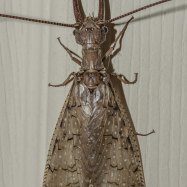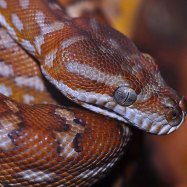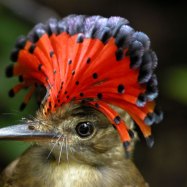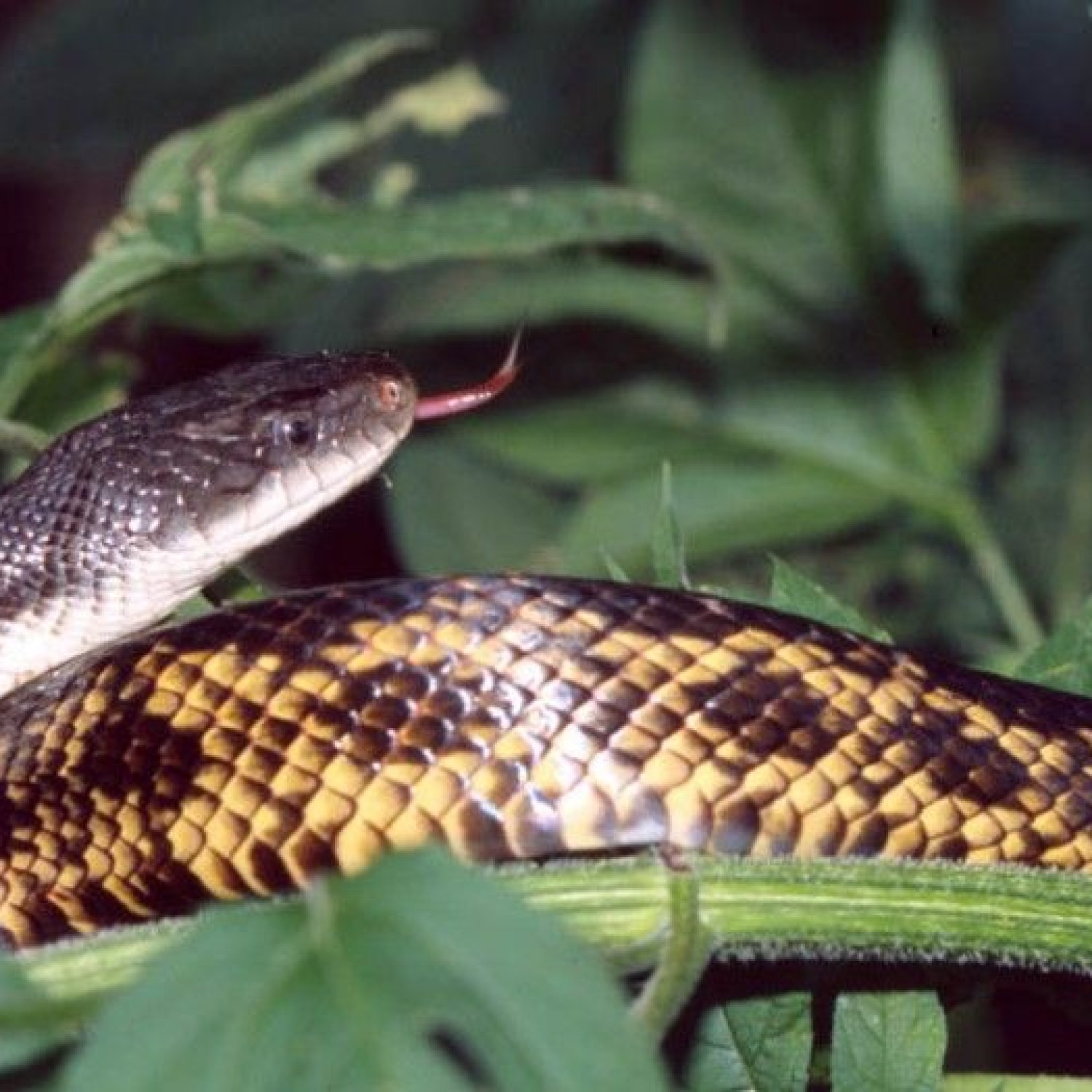
Western Rat Snake
3 to 6 feet
The Western Rat Snake, found in North America and belonging to the Colubridae family, can grow up to 6 feet in length. With a slender and elongated body shape, it is often mistaken for a venomous snake. It is beneficial to farmers as it preys on rodents. However, it is important to remember to keep a safe distance and avoid handling this non-venomous, yet aggressive, snake.
Animal Details Summary:
Common Name: Western Rat Snake
Kingdom: Animalia
Habitat: Wooded areas, grasslands, farmland, swamps, rocky hillsides
The Fascinating Western Rat Snake: A Master of Adaption and Survival
When you think of a snake, what comes to mind? Is it fear, revulsion or maybe even admiration? Snakes are arguably one of the most misunderstood and fascinating creatures on Earth. Among these diverse and intriguing species is the Western Rat Snake, scientifically known as Pantherophis obsoletus, a native of the United States.This slender and elongated serpent has garnered a number of names, such as black rat snake, pilot black snake, and chicken snake, but the most commonly used name is Western Rat Snake. Throughout this article, however, we will refer to this creature by its scientific name Western Rat Snake.
The Western Rat Snake is a member of the Animalia kingdom, the Chordata phylum, and the Reptilia class. It belongs to the Squamata order, which includes all scaled reptiles, such as snakes, lizards, and amphisbaenians. Within the Squamata order, the Western Rat Snake belongs to the Colubridae family, the largest and most diverse family of snakes in the world, with over 2,000 known species.
This intriguing snake species can be found in a variety of habitats across the United States and Canada. From wooded areas to grasslands, farmlands to swamps, and even rocky hillsides, the Western Rat Snake has adapted to thrive in diverse environments. Let's delve deeper into the Western Rat Snake's features, habits, and abilities, and discover why it is a master of adaption and survival.
Appearance and Coloration
One of the most striking features of the Western Rat Snake is its variable coloration. While the color can vary greatly depending on the subspecies, the most common colors are black or dark brown with a light gray or cream-colored belly.The Eastern subspecies of the Western Rat Snake can be identified by their black coloration with white or yellowish stripes on their back, while the Texas subspecies has a black body with yellowish or cream-colored bands White Crappie. Another subspecies, the yellow rat snake, has a yellowish-orange body with dark brown blotches, and the gray rat snake is a light gray color with darker gray blotches.
In addition to their colorful skin, Western Rat Snakes have a slender and elongated body shape, measuring anywhere from 3 to 6 feet in length. This makes them relatively easy to identify, even for those with little knowledge of snakes.
Habitat and Distribution
As mentioned earlier, the Western Rat Snake can be found in a range of habitats across the United States and Canada. Their adaptability and resilience make them a common sight in wooded areas, grasslands, farmlands, and wetlands. They are also known to inhabit rocky hillsides and even abandoned buildings.Native to the United States, the Western Rat Snake is most commonly found in the central and eastern parts of the country, including states like Texas, North Carolina, and Ohio. Their range also extends into southeastern Canada. Due to their adaptability, they can thrive in both rural and urban environments, making them a common sight even in residential areas.
It's important to note that Western Rat Snakes are non-venomous and are considered beneficial to human habitats. They play an important role in controlling rodent populations, making them a valuable species in the ecosystem.
Feeding and Hunting
Being carnivorous, Western Rat Snakes primarily feed on small rodents like rats, mice, and moles. This is where they get their common name, as they are known to be a natural predator of the common rat. They also consume birds, amphibians, and other small reptiles.The Western Rat Snake is a skilled hunter and uses its sharp senses to locate prey. It is an excellent climber, using its muscular body to navigate through trees and shrubs, often preying on birds and their eggs. It also has the ability to camouflage itself, making it a stealthy predator.
Behavior and Adaptability
The Western Rat Snake is a diurnal species, meaning it is active during the day. This allows them to bask in the sun, regulating their body temperature and maintaining their metabolism. During the colder months, they hibernate in hidden places like burrows, rock crevices, or abandoned buildings.One of the most fascinating abilities of the Western Rat Snake is its defensive behavior. When feeling threatened, it will often flatten its head and rattle its tail, mimicking the behavior of venomous snakes like the rattlesnake. It also has the unique ability to excrete a pungent musk when threatened, which is effective in deterring predators.
Another interesting aspect of the Western Rat Snake is its adaptability. It can survive in a variety of environments and has been known to adapt to changes in its surroundings. This has also contributed to their successful spread throughout the United States and Canada.
The Western Rat Snake in Folklore and Culture
Throughout history, snakes have been both feared and revered by different cultures. The Western Rat Snake is no exception and has been depicted in various forms of folklore and art.In Native American folklore, the Western Rat Snake is often seen as a symbol of courage and strength. Some tribes also believed that the shedding of the snake's skin was a representation of rebirth and renewal, and would use the snake's skin in medicinal and spiritual rituals.
In African American culture, the Western Rat Snake (commonly known as the Black Rat Snake) was a symbol of luck and protection against evil spirits. There are also several folklores surrounding the snake's ability to control rodent populations, making them a sign of prosperity and abundance.
The Western Rat Snake has also been featured in numerous works of art, including paintings, pottery, and even tattoos. Its striking appearance and cultural significance make it a popular choice among artists and tattoo enthusiasts alike.
Threats to the Western Rat Snake
While the Western Rat Snake has a wide range and is not considered endangered, there are still several threats to its population. One of the biggest threats is habitat loss due to deforestation and urbanization. This disrupts their natural habitat and can diminish their food sources.Another threat is human persecution. Due to their resemblance to venomous snakes and their role as natural predators, they are often killed by humans out of fear or misunderstanding.
It's important to remember that snakes are an essential part of our ecosystem and serve a crucial role in maintaining balance. As humans, it is our responsibility to protect and respect all living creatures, including the Western Rat Snake.
In Conclusion
The Western Rat Snake is an incredible example of adaptation and survival. From its unique coloration and ability to thrive in diverse environments to its important role in controlling rodent populations, this snake species is truly fascinating.While still misunderstood and feared by some, the Western Rat Snake is a creature that deserves our admiration and respect. So next time you see one, take a moment to appreciate this remarkable and resilient species.

Western Rat Snake
Animal Details Western Rat Snake - Scientific Name: Pantherophis obsoletus
- Category: Animals W
- Scientific Name: Pantherophis obsoletus
- Common Name: Western Rat Snake
- Kingdom: Animalia
- Phylum: Chordata
- Class: Reptilia
- Order: Squamata
- Family: Colubridae
- Habitat: Wooded areas, grasslands, farmland, swamps, rocky hillsides
- Feeding Method: Carnivorous
- Geographical Distribution: United States and Canada
- Country of Origin: United States
- Location: North America
- Animal Coloration: Varies depending on subspecies, usually black or dark brown with light gray or cream-colored belly
- Body Shape: Slender and elongated
- Length: 3 to 6 feet
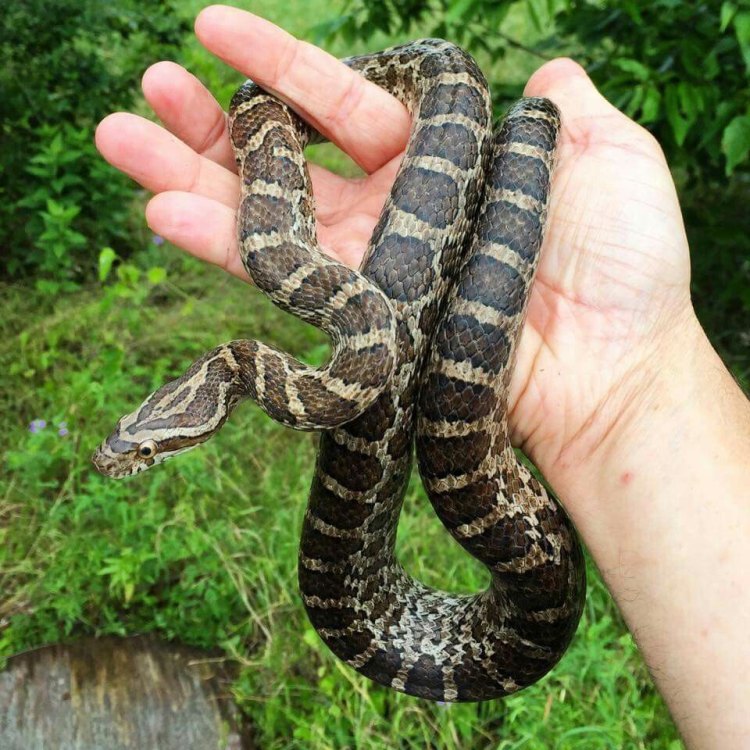
Western Rat Snake
- Adult Size: 4 to 5 feet
- Average Lifespan: 10 to 15 years
- Reproduction: Sexual
- Reproductive Behavior: Mating occurs from April to June
- Sound or Call: Hiss when threatened
- Migration Pattern: Non-migratory
- Social Groups: Solitary
- Behavior: Nocturnal, active mainly at night
- Threats: Habitat loss, road mortality, illegal collection
- Conservation Status: Least Concern
- Impact on Ecosystem: Important predator of rodents
- Human Use: Collected for pet trade
- Distinctive Features: Smooth scales, narrow head, large eyes
- Interesting Facts: They are excellent climbers and swimmers
- Predator: Predatory birds, mammals, and larger snakes
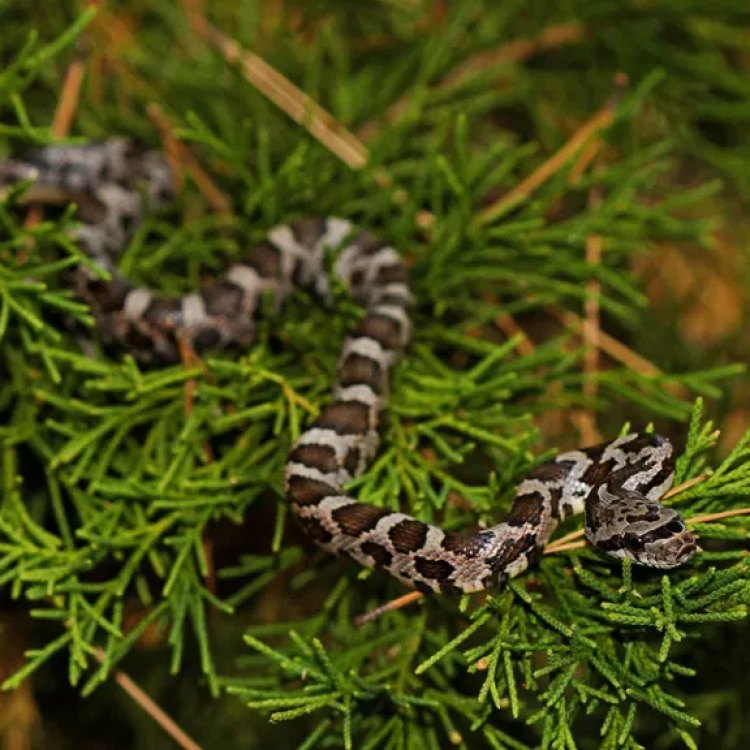
Pantherophis obsoletus
The Western Rat Snake: A Fascinating and Widely Underappreciated Reptile
When you think of snakes, what comes to mind? Perhaps you picture a venomous and menacing creature, ready to strike at the slightest provocation. But not all snakes fit this stereotype. In fact, there is a fascinating and widely underappreciated reptile that can be found in many parts of the United States: the Western Rat Snake.Known by many other names such as the Black Rat Snake or the Pilot Black Snake, this non-venomous species has been living on this continent for millions of years PeaceOfAnimals.Com. It is a crucial component of the ecosystem and plays a vital role in keeping rodent populations in check. However, despite its importance and unique characteristics, the Western Rat Snake remains relatively unknown to the public. In this article, we will dive into the world of this magnificent serpent and discover all its intriguing features and behaviors.
Appearance and Size
The Western Rat Snake is a relatively long and slender snake, with an average adult size ranging from 4 to 5 feet. However, some individuals can grow up to 7 feet in length. They have a distinctively narrow head compared to other snakes, with prominent large eyes. Their body is covered in smooth scales, which can vary in color from dark brown or black to a lighter shade of grey or yellow. Younger snakes tend to have a more vibrant pattern on their back, with dark blotches and stripes that fade as they mature.Despite their intimidating size, Western Rat Snakes are relatively harmless to humans Winter Moth. They are non-venomous and pose no threat to our safety. In fact, they are even beneficial to have around, given their role as rodent predators.
Lifespan and Reproduction
Western Rat Snakes have a relatively long lifespan, with an average of 10 to 15 years in the wild. However, some individuals have been known to live up to 20 years or more. Their lifespan largely depends on factors such as habitat quality, food availability, and threats from humans.Reproduction in Western Rat Snakes is sexual, with mating occurring from April to June. During this period, males will compete for females by engaging in combat, where they wrap their bodies around each other and try to push their opponent down. The victorious male will then mate with the female, and she will lay a clutch of eggs, usually in a hidden and secluded spot. The female will then leave the eggs to develop and hatch on their own.
Social Behavior and Migration
Western Rat Snakes are solitary creatures and do not form social groups. They prefer to spend most of their time alone, hunting and resting in their own territory. They are primarily nocturnal, meaning they are active mainly at night, but they can also be seen basking in the sun during cool mornings or after a rain shower.Unlike many other snake species, Western Rat Snakes are non-migratory. They tend to stay within a limited range, usually a few acres, throughout their lives. They are also excellent climbers and can be found in trees, bushes, and even on buildings. They are also proficient swimmers and can traverse rivers and streams with ease.
Threats and Conservation Status
Unfortunately, Western Rat Snakes face numerous threats to their existence. The two most significant threats are habitat loss and road mortality. Like many other wildlife species, Western Rat Snakes have been significantly impacted by human activities such as urbanization and agriculture. As their habitat shrinks, their populations decrease, making it challenging for them to find food, shelter, and mates.Road mortality is also a significant threat to Western Rat Snakes. As they are non-migratory, they are often hit by cars when crossing the road. This not only impacts their individual survival but also reduces the gene pool within the population, potentially leading to a decline in genetic diversity.
Another threat that Western Rat Snakes face is illegal collection for the pet trade. Many people find these snakes fascinating and decide to take them home as pets. However, this practice not only harms the individual snake but also disrupts the natural balance in the ecosystem, as they are important predators of rodents.
Despite these threats, the Western Rat Snake is classified as being of 'Least Concern' on the IUCN Red List of Threatened Species. This status is given to species that have stable populations and are not at significant risk of extinction. However, this does not mean that we should not be concerned about their well-being and take action to ensure their continued survival.
Ecological Role
As mentioned earlier, Western Rat Snakes play a vital role in the ecosystem as predators of rodents. Rodents are known to cause significant damage to crops and homes, and without predators like the Western Rat Snake to keep their populations in check, their numbers can quickly get out of hand. Therefore, these snakes are a natural pest control agent, helping to maintain a healthy balance in the ecosystem.Moreover, they also serve as prey for other animals such as predatory birds, mammals, and larger snakes. This creates a delicate web of interdependence within the ecosystem, where the Western Rat Snake plays a crucial role in keeping the food chain in balance.
Human Use and Interesting Facts
Western Rat Snakes have been collected for the pet trade and used in scientific research. They are relatively easy to care for, making them a popular choice for snake enthusiasts. However, it is crucial to remember that these snakes are wild animals and should not be taken from their natural habitat. It is essential to respect them and appreciate their role in the ecosystem.One of the most interesting facts about Western Rat Snakes is their ability to climb trees and swim. Unlike many other snake species, they are incredibly agile and can maneuver through vegetation and water with ease. This feature has also earned them the name 'Pilot Black Snake,' as they were believed to be able to navigate rivers and creeks like a ship's pilot.
The Western Rat Snake and Human-Animal Conflict
Due to their limited and solitary existence, Western Rat Snakes pose no significant threat to humans. However, they can sometimes be found in urban and suburban areas, leading to the occasional human-snake encounter. When this happens, it is important to remember that the Western Rat Snake is a protected species and should not be harmed. If the snake is in a location that poses a danger to humans, it is best to contact a professional snake removal service to ensure the safe relocation of the animal.Moreover, it is also crucial to properly dispose of any trash or food leftovers, as they can attract rodents, which, in turn, can attract Western Rat Snakes. By keeping our environment clean and minimizing human activities that impact their habitat, we can coexist peacefully with these fascinating creatures.
In Conclusion
The Western Rat Snake is an intriguing and important part of the North American wildlife. Its unique features, behaviors, and role in the ecosystem make it a valuable and often overlooked species. It is our responsibility to ensure their continued survival by protecting their habitat and appreciating them as an essential part of our natural world. So, the next time you see a Western Rat Snake, instead of being afraid, take a moment to observe and appreciate this magnificent and widely underappreciated reptile.

The Fascinating Western Rat Snake: A Master of Adaption and Survival
Disclaimer: The content provided is for informational purposes only. We cannot guarantee the accuracy of the information on this page 100%. All information provided here may change without prior notice.




